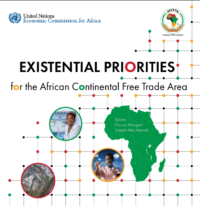Can Africa accelerate initiatives towards the freer movement of Africans in Africa?

This chapter addresses the challenge of advancing towards the freer movement of Africans across the borders of African countries.67 The African Economic Community Treaty, commonly known as the Abuja Treaty, which was agreed in 1991 and came into force in 1994, made the movement of Africans a priority in the economic integration agenda. The free movement of people, rights of residence and rights of establishment by Africans across the borders of AU member states were included in article 4(2)(i). The rationale of this commitment is that borders decided by colonial powers led to poorly defined territories that paid little attention to cultural or economic links (see chapter 4). Moreover, as the European Union had shown, opening borders for the freer movement of the factors of production, including people, contributed to economic development and more peaceful relationships in the region. The evidence remains strong that free movement of people across borders supports economic development (Gelb and Krishnan, 2018). Progress towards the freer movement of Africans in recent decades has been uneven and slow. The Free Movement of Persons (FMP) protocol to the Abuja Treaty was approved at the same summit in January 2018 where the African Continental Free Trade Agreement (AfCFTA) was endorsed. The protocol set out its rationale with great clarity: “…the free movement of persons, capital goods and services will promote integration, Pan-Africanism, enhance science, technology, education, research and foster tourism, facilitate inter-African trade and investment, increase remittances within Africa, promote mobility of labour, create employment, improve the standards of living of the people of Africa and facilitate the mobilization and utilization of the human and material resources of Africa in order to achieve self- reliance and development….” (AU, 2018a, p. 4). But by October 2021, only 4 countries had ratified the FMP protocol and submitted their instruments of ratification, whereas 40 countries had ratified the AfCFTA, and 38 had submitted their ratification instruments (Tralac, 2021). This chapter describes the circumstances, policies and outcomes regarding freer movement in Africa, briefly reviewing recent migration patterns within Africa, between African countries and regions, and out of Africa. It then considers progress in liberalizing and modernizing travel regulations at the national level, considering overall patterns, and reviews progress towards freer movement at the regional and continental levels in terms of multilateral agreements. It also notes issues of concern and broad patterns of behaviour before making pragmatic suggestions on how to advance the agenda on free movement of people in the regions and for the continent and its islands as a whole.



